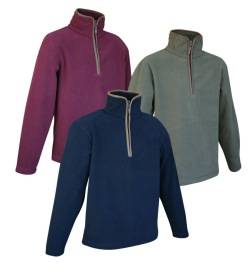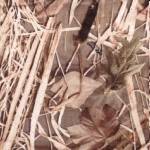Jack Pyke Countryman Fleece Range. New Range
Jack Pyke Countryman Fleece Range

Jack Pyke Shop online will be taking delivery of the all new Countryman Fleece Range on Wednesday 9th Dec
Wildlands Camo Design
The ultra realistic 3D Wildlands Camouflage
Designed specifically to be used in and around wetlands down by the waters edge, but also very efective with stuble in the open field.
BBQ TROUT COOKED IN NEWSPAPER
BBQ TROUT RECIPE
BBQ TROUT COOKED IN NEWSPAPER - Place the fish on a sheet of newspaper and make a few diagonal slashes along each side to allow the flavors to sink in. Pour a little olive oil onto the fish and rub all over.
Buying And Licensing A Shotgun In The UK
You've decided you want to go hunting and you need a shotgun - but where do you start? If you've never
purchased one before, here are some key things to consider.
Applying for a Licence
Anyone who wishes to own, buy or use a shotgun or buy ammunition in the UK must first obtain a shotgun licence
or certificate. A shotgun is defined as a gun with a bore diameter no greater than 2 inches and a barrel length of at
least 24 inches. This is distinct from a firearm which requires a separate licence. You can apply for a shotgun
licence using a form available from your local police station. In England, Wales and Scotland you must submit your
completed form with four passport photographs, the fee (currently £50), and the details of one referee. The police
may also require evidence that you have adequate secure storage facilities in place for your shotgun before they
will issue a certificate. They may visit you at your home to assess your gun safe. A shotgun license is usually valid
for five years, whether issued new or as a renewal.
Age Restrictions
You must be eighteen years or over to buy a shotgun, but you can apply for a shotgun certificate below this age.
You are allowed to receive a shotgun as a gift from the age of fifteen, but an adult would need to take responsibility
for it and its safe storage.
Further details about applying for a shotgun licence are available at the official Gov website.
Regional Differences
In Northern Ireland when you submit your application for a shotgun licence you will be required to give two
referees, who must have known you for a minimum of two years, or one year for an official of a shooting club of
which you are a member. Once your application has been submitted to the Firearms and Explosives department
you will be contacted by an officer who will arrange to meet you at your home to review your application
Choosing your first shotgun
So now you have a shotgun certificate, you can go and buy your first shotgun. A second hand gun may be a good
option for when you are new to shooting. Look out for a gun dealership which offers a warranty or refund policy so
you are covered in the event that a used gun is faulty.
When choosing a gun you will need to decide on the calibre, the length and whether to go for a single barrel,
double barrel, semi automatic or pump shotgun. A twelve gauge is ideal for the beginner, and is suitable for both
target practice and hunting. There is also a good range to choose from. If you plan to shoot targets primarily with
just occasional hunting to begin with, you might also want to consider a twenty gauge. Ammunition is readily
available for either of these gauges.
If you're a novice and need help with applying for your license or choosing the right gun, get an experienced friend
to help or find a local shooting club to join. Choosing your first shotgun is a big decision and it's worth taking the
time to get it right. Once you have that and your certificate, you can look forward to years of enjoyment from the
sport.
The information on this site is provided without representations or warranties about its completeness or accuracy.
You must not rely on this information as an alternative to professional advice.
Air Rifle Safety
What You Need To Know
When it comes to handling an air rifle, remember that it's not the equipment which is dangerous in itself, it's how a person uses it that can be dangerous. In essence it's all about being responsible.
Safe Air Rifle Practice Advice
Air rifle safety has to be the most important element of using an air rifle. Your love of the sport, enjoying the great outdoors, and the thrill of the hunt all matter, but safety has to come first, always. An air rifle is a lethal weapon after all, so it needs to be used responsibly and with due care.
A Beginner's Guide to Shooting Magpies
It's always open season when it comes to shooting magpies. Unlike game birds, such as pheasant and grouse, which may only be hunted during open season, magpies are grouped with crows and woodpigeons in the category of pest and may be controlled at any time of year.
Camouflage Hunting Clothing
Camouflage or camo for short, is all around us, both man made and mother nature.

English Oak Camouflage Design From Jack Pyke UK
Camouflage hunting jackets are great for helping the hunter blend in to the surrounding countryside, but how did camouflage patterns & Camouflage Hunting Jackets come about?
Mother nature and camouflage
Animals and insects evolving over millions of years, both in water and on land have developed a fantastic range of many different camouflage patterns. Camouflage in nature allows astonishing survival techniques, allowing animals to move in on there pray unnoticed & equally to blend in to the surrounding area so not to be seen by the attacker. Some animals and insects can even change their colour and shape to Camouflage & disguise themselves helping them blend into the surrounding areas, or to simply warn off predators.
Early man and Camouflage
Even early humans, used camouflage techniques for hunting and gathering food. For example mud, foliage and even dung would be used to help camouflage & blend in to the surrounding areas. Extraordinarily it took the armies across the world a very long time to catch on to the camouflage techniques. Armies have not always disguised themselves from the opposition, it used to be considered shameful to hide from your opponent, instead of camouflage jackets they used bright coloured uniforms to identify themselves from the opposition. These bright coloured uniforms where a great visual target for the enemy!
Camouflage or concealment of equipment to help you blend in to your natural surroundings and/or terrain, dates back to the French term Camofler or Veil. Abbot Thayer an American artist in the early 1900's, studied how incredibly clever animals are in disguising themselves, using natural camouflage techniques. He was so taken back at how well some animals could just blend in to the surrounding area just using natural camouflage, he started to note down every animal which used this magnificent way in which to hide within the natural terrain. At the beginning of the first World war, a French artist was commissioned to design a camouflage pattern which could be used on soldiers uniforms & camouflage jackets to help them blend in and not be seen so easily by the enemy. The French also created a division in which they named, the camouflage division.
Camouflage today
Although camouflage designs have really expanded over the years, specifically for army usage, in more recent years camo patterns have been adapted and used for the hunting and fishing fraternity. Many hunters used army surplus clothing for camouflage hunting jackets, these typically came in the British Army DPM pattern.
In recent years tastes have become more sophisticated with manufacturers designing camouflage hunting clothing lines to suit this every increasing demand. Jack Pyke is one such company that has come up with camouflage designs that really meet the demands and resemble the great British countryside, and not a USA forest. Such as the now famous English Oak camouflage, which can be found on the Jack Pyke Clothing range, along with the many other hunting items in this pattern, such as the large choice of gun slips, hunting bags and even English Oak Neoprene camo. For the summer and spring hunting season, they have also designed the English Woodland camo, this is available on a large range of Camouflage hunting clothing, game bags and other hunting items.


